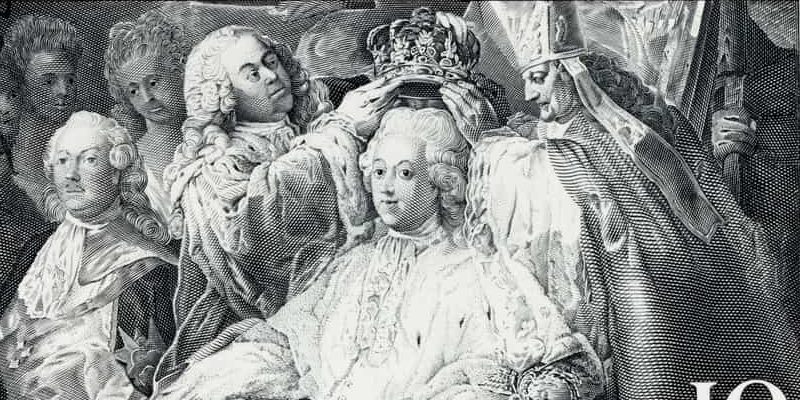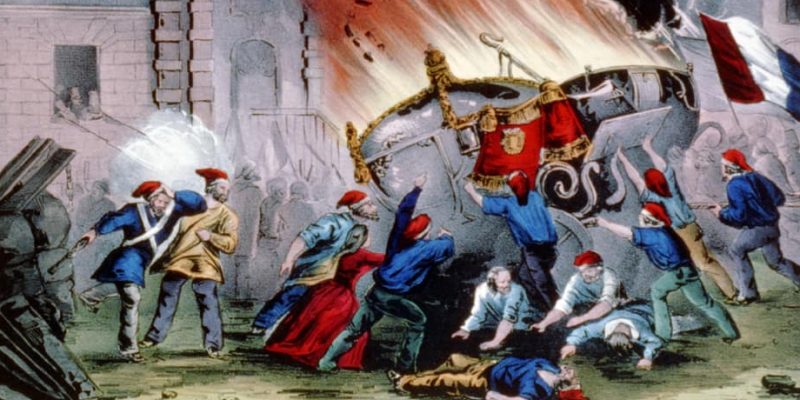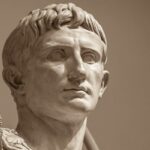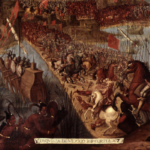We explain what absolutism was, the historical context in which it emerged and its characteristics. Furthermore, the monarchs who practiced it.

What was absolutism?
absolutism It was a political regime that characterized European monarchies between the 16th and 18th centuries. The term “absolutism” comes from the notion that the king's authority was absolute and, therefore, concentrated all the functions of power.
Absolutist ideologues maintained that the only source of legitimate power was God and that the monarch exercised sovereignty (authority) in his name. Therefore, The king was considered a sacred figure and his command was divine. The inhabitants of the kingdom were considered subjects and had to abide by the king's decisions.
In short, the monarchies of absolutism were defined by the exercise of the indisputable authority of the king. The monarch established the laws of the kingdom and decided on all areas of government: war, internal politics, social order, economic administration and finance.
The absolutist kings had institutions and appointed officials to exercise the different functions of government. Those who held these positions belonged to the nobility and, on many occasions, had to reside at the royal court. In this way, the monarchs sought to control their actions and maintain their authority in all areas of government.
See also: Absolute monarchy
Key points
- Absolutism was the political regime of European monarchies between the 16th and 18th centuries, in which the king had absolute authority and concentrated all the functions of power.
- Its main characteristics were the growth of monarchical power, the absence of autonomous institutions and the development of the king's sovereignty by divine mandate.
- The historical context of absolutism was characterized by the consolidation of the power of European kings at the expense of feudal lords, territorial wars, colonial expansion and the growth of trade.
- In absolutist monarchies, social organization was estate-based. Nobles and clergy enjoyed privileges, while paying taxes and work fell on ordinary citizens.
- Absolutist ideologues argued that the king was a sacred figure and that his command was divine. This implied that the inhabitants of the kingdom had to abide by their decisions as subjects.
- The end of absolutism occurred with the liberal revolutions of the late 18th and 19th centuries. These led to the creation of different forms of government that limited the power of the king or included institutions of citizen representation.
Historical context of absolutism
During the Middle Ages, political power in Europe was distributed in the hands of feudal lords who served as rulers of their own lands. Towards the end of the 15th century and the beginning of the 16th century, some European monarchies began to concentrate power and impose themselves on the different local powers exercised by the feudal nobility.
There were different elements that favored this situation. Among them, we can highlight the wars between European kingdoms for control of territories, their expansion to other continents, the creation of commercial networks with Asia, Africa and America, the growth of trade and the consolidation of the bourgeoisie as a new social class.
During the rise of absolutism, European monarchies fought dozens of wars. The most powerful kingdoms, such as Spain, France, England or Portugal, competed to control territories and trade in Africa, America and Asia. The confrontations became more complex and the different kingdoms established alliance systems.
Among the most important wars of the period are the Thirty Years' War (1618-1648), the Nine Years' War (1688-1697), the Franco-Dutch War (1672-1678) and the War of the Spanish Succession. (1702-1713).
Characteristics of absolutism

Among the main characteristics of absolutism are the concentration of power in the kings, the absence of autonomous institutions and division of powers, the divine right of monarchical sovereignty and the social organization of the Old Regime.
The characteristics of absolutism can be described as follows:
- Concentration of power. Royal authority was absolute and the monarch ruled over the entire kingdom. This implied the loss of power of part of the nobility, who held the government of their lands as feudal lords in previous centuries.
- Institutions and royal bureaucracy. To exercise government, the king had institutions and appointed officials on whom he imposed his authority. In some cases, monarchs forced officials to reside in royal courts to maintain their influence.
- standing armies. The growth of the kingdom's standing armies was a fundamental factor for the concentration of monarchical power. In this way, the king could maintain the integrity of the territory and suppress threats to his power.
- Sovereignty by divine mandate. For the defenders of absolutism, there was only one authority, which was that of God. To govern worldly affairs, God conferred sovereignty on the king, who acted as his representative. Therefore, the mandate of absolutist kings was considered divine and indisputable.
- Old Regime. The society of the absolutist regimes was estate-based and was divided into static groups: the nobles, the clergy and the commoners. Part of the wealthiest bourgeoisie was integrated into the nobility through their incorporation into the royal bureaucracy (they were called “toga nobles”).
- Mercantilism. During the rise of European absolutism, mercantilism spread. It was an economic doctrine that maintained that the wealth of the kingdom was based on the accumulation of precious metals (such as gold and silver).
Representatives of absolutism
The most important kings of absolutism were:
- Louis XIV of France, the “Sun King” (1638-1715).
- Peter I of Russia, “Peter the Great” (1672-1725).
- Charles XII of Sweden (1682-1718).
- Philip V of Spain, “the Courageous” (1683-1746).
- Charles VI of the Holy Roman Empire (1685-1740).
- Frederick I of Prussia, the “Sergeant King” (1688-1740).
- Gustav III of Sweden (1746-1792).
- Ferdinand VII of Spain, the “King Felón” (1784-1833).
On the other hand, among the main thinkers and intellectuals who wrote and defended absolutism are Jean Bodin (1530-1596), Thomas Hobbes (1588-1679) and Jacques Bossuet (1627-1704).
The society of absolutism
The European society of the 17th century preserved characteristics that came from the Middle Ages and, therefore, It is known as the society of the “Ancient Regime”. It was a society divided into estates (levels) that established differentiated obligations and rights. The king was considered a sacred figure and was therefore above the rest of society.
The three estates were the nobles, the clergy and the commoners. The nobles and the clergy were classes that had privileges. That is, they had certain rights that differentiated them from the common people. For example, they did not have to pay taxes, they had to be received in the royal courts and they had special treatment.
The commoners constituted the vast majority of the population and the class on which all productive tasks fell. In addition, they paid royal taxes and the peasants had to pay rents to the nobles who owned the lands they worked.
Kings were the only ones who could grant titles of nobility. On many occasions, they granted titles or bureaucratic functions to the richest members of the bourgeoisie and, in this way, incorporated them into the nobility.
The end of absolutism

Towards the end of the 18th century, The French Revolution overthrew the absolutist regime of King Louis XVI with the objective of establishing a republican government, with division of powers and inspired by the principles of the Enlightenment. This intellectual movement questioned the notion of sovereignty by divine command and maintained that sovereignty resided in the people.
The French revolutionary process alarmed all European monarchies which in a few years faced the territorial expansion initiated by Napoleon Bonaparte, a general who took power in France. In 1814, Napoleon was defeated, the monarchy was reestablished and a period known as “the Restoration” began.
The European powers sought to avoid new social and political revolutions. However, European society was going through profound transformations, and absolutist regimes did not satisfy the demands of a large part of the population.
Consequently, In the 19th century, there were different liberal revolutions against monarchies. Although in some countries the figure of the king was maintained, political systems with division of powers and new institutions were established. Furthermore, the liberal revolutions destroyed the estate bases of the Old Regime.
References
- Ackermann, ME, Schroeder, MJ, et al. (2008). Absolutism, European. Encyclopedia of World History. The First Global Age: 1450 to 1750. Vol III. Facts on File.
- The Editors of Encyclopaedia Britannica. (2023). Absolutism. Encyclopedia Britannica. https://www.britannica.com/
- Rizzi, A and Raiter, B. (Eds.). (2008). Absolutism. A story to think about. Modern and Contemporary. Rule.





